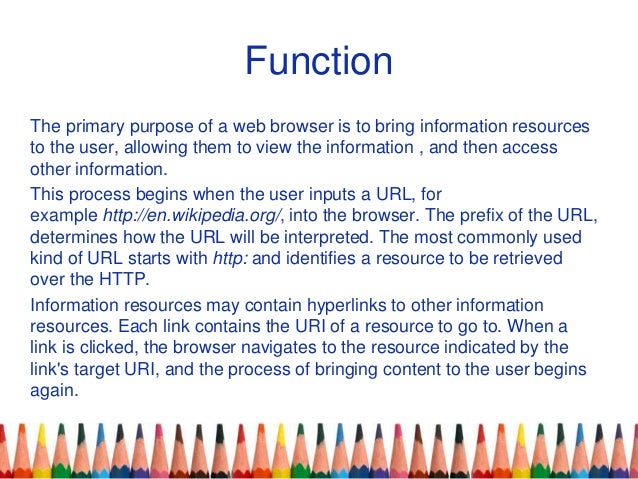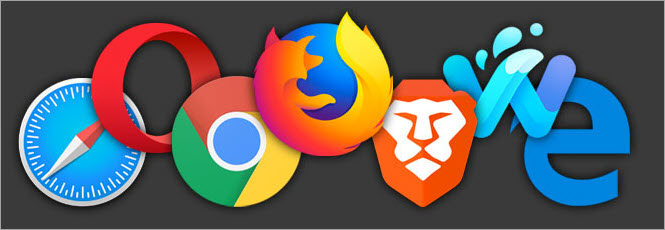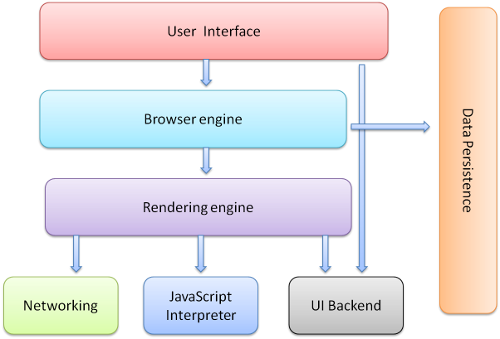A web browser takes you anywhere on the internet, letting you see text, images and video. It’s important to have the latest version.
The web server sends the data back to that displays the results on internet supported devices. The web retrieves the necessary content from a web server and displays the page on the user’s device.
The browser sends requests to web servers all over the internet by using (Hypertext Transfer Protocol). A browser requires a smartphone, computer, or tablet and internet to work.
What are the functions of Browser?

- The main function is to retrieve information from the World Wide Web and making it available for users.
- Multiple webpages can be opened at the same time.
- Provide security of data through its secure methodologies.
- Using a file in a User Box of an MFP on the network.
- It allows the user to interact with the web pages and dynamic content like surveys, forms, etc.
- It processes the user inputs in the form of URL like http://www.google.com and allows the access to that page.
What are the elements of Browser?
- Address bar – To enter the URL.
- Back and forward buttons.
- Bookmark option.
- Refresh and stop buttons.
- The Home button takes you to your home page.
Top Web Browsers are:

- World wide web: The leading information retrieval service of the Internet (the worldwide computer network).
- Internet explorer: It is the most used browser in the world.
- Mozilla Firefox: It uses the Gecko rendering engine to display web pages, which implements current and anticipated web standards.
- Opera: It distinguishes itself from other browsers through its user interface and other features.
Work of Browser:
- With the use of web browser, we are able to access the World Wide Web easily.
- Http helps web clients and web servers are allowed to connect to each other.
- With the help, we are able to see many web pages which are made of web protocol.
- When the user enters a web address on the address bar, then the browser sends his request to the web server in the form of http command, after that the browser connects with that web server and removes the requested web page from the user’s.
- Supports formatted documents.
How do a Web Browser works?

- You enter a URL.
- Finds the IP address for the domain using DNS.
- Initiates a connection with the server.
- Next, it sends an HTTP request to the webserver.
- The server handles the request and sends out an HTTP response.
Some Components of Browser:

- User Interface: Point of human-computer interaction and communication in a device.
- Browser Engine: Core software component of every major.
- Networking: Exchange of information and ideas among people with a common profession or special interest, usually in an informal social setting.
- Data Storage: Use of recording media to retain data using computers or other devices.
